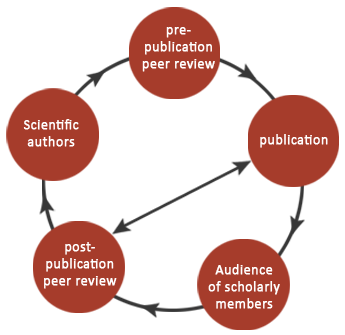Peer review for reputed journal publication is an age-old practice for academic publications. This is especially critical for scientific publishing that often has crucial findings or absolutist positions that need validation.

While the conventional practice was all about pre-publication peer review, digital technology has today allowed for newer forms of peer review mechanisms. Post-publication peer review is one of the fast-developing mechanisms in the field of scientific publications.
Why post-publication peer review?
There were certain issues with pre-publication peer review that necessitated the development of post-publication peer review. The first and most obvious concern is time. (https://www.governmentauctions.org/) Peer review is a time-consuming process that often delays a publication by months or years. Such delays can prove critical for scientific publications where the cutting-edge findings get stuck in the peer review process from being online.
The other obvious challenge was the transparency factor. Single-blind or double-blind peer review mechanisms have always been criticized for the lack of transparency and possibility of abuse, where peers may intentionally give poor reviews to their potential competitors.
How do they differ?
The basic philosophy between the two mechanisms is divergently different. Pre-publication peer review is a mechanism that believes no scientific research paper should be published until it is tested and validated by peers. The post-publication peer review mechanism believes that any scientific research deserves to be ‘made public’; it can be reviewed via open peer commentary on digital platforms, and the entire discourse may be accessed by one and all.
Many journals make a distinction between ‘made public’ and published and follow a two-tier process. An article is ‘made public’ as a ‘pre-print’ on the digital platform for peer review, and a final version is then ‘published’. The first is often noted ‘not for citation’ while the final is considered as canon.
Limitations of post-publication peer review
The process is not without its pitfalls and therefore, is still evolving. It is often subject to trolling or abuse, as the reviewer’s quality is often a challenge even on open platforms. Ironically, this lack of an established mechanism, suggesting to be one of its present drawbacks. Post-publication peer review often does not get the same prestige as pre-published reviewed articles.
Conclusion
Peer-review mechanisms for scientific publishing continues to evolve with the new possibilities offered by digital technology. It will be some time before the new mechanisms are properly established. However, the process of its evolution also offers wonderful new opportunities for young authors, who can explore such platforms along with pre-reviewed publications.


